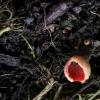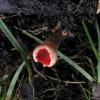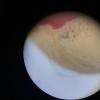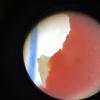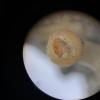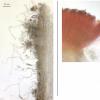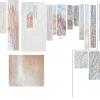
18-11-2025 13:59
Nogueira HéctorNovember 14, 2025 Brazuelo (León) SPAIN Hymenosc

17-11-2025 19:14
herman lambertApothécie discoïde 0.6 cm diam., orangeFace hym�

17-11-2025 21:57
Philippe PELLICIERBonjour,Récolté sur bois de feuillu mort dur, no

16-11-2025 21:09
 Robin Isaksson
Robin Isaksson
Anyone recognize this acc. to pictures.? Found on

17-11-2025 21:46
Philippe PELLICIERBonjour,Récolté sur bois pourrissant de feuillu

14-11-2025 16:26
 Marian Jagers
Marian Jagers
Hello everyone, On dead wood of Cytisus scoparius

15-11-2025 23:22
Mario FilippaHello,this is what I think to be Hymenoscyphus mac

15-11-2025 20:25
 Riet van Oosten
Riet van Oosten
Hello, Found by Laurens van der Linde, Nov. 2025

14-11-2025 18:31
 Lothar Krieglsteiner
Lothar Krieglsteiner
Hello,can somebody provide me with a file of:Rothe
Sarcoscypha coccinea or austriaca
B Shelbourne,
23-01-2024 15:40
No spores ejected after several hours in a damp container, and I couldn't find many mature and vital asci or spores in two sections. I tried to use Spooner's key to Sarcoscypha and Sarcosomataceae in Britain (2002).
Habitat: Buried deciduous twig, muddy area with leaf litter, grass around, near Salix and Alnus, streams nearby flooding area in heavy rain.
Key characters: Hairs sinuous but not convoluted, paraphyses not moniliform below (one maybe), spores narrower and more rounded at the poles.
Vital spores measured in asci (some seem too narrow to be fully mature):
(17.1) 20.4 - 21.4 (21.8) × (7.8) 7.84 - 9.4 (11.6) µm, Q = (1.9) 2.2 - 2.5 (2.7), N = 7, Me = 20.5 × 9 µm ; Qe = 2.3.
Peter Thompson,
23-01-2024 15:51
Re : Sarcoscypha coccinea or austriaca
The fruit bodies are too immature.
The best month for collecting Sarcoscypha in Britain is February, so perhaps revisit the site in two to three weeks.
S. austriaca is far more common than S. coccinea in Britain.
B. Spooner made mistakes with Sarcoscypha taxonomy, among other things. Best to consult more up to date data sources.
With Best Wishes,
Peter.
Hans-Otto Baral,
23-01-2024 16:35

Re : Sarcoscypha coccinea or austriaca
From the curled hairs I suspect S. austriaca which has a later phylogeny than S. coccinea, i.e. mainly March-April.
B Shelbourne,
23-01-2024 17:24
Re : Sarcoscypha coccinea or austriaca
Thank you both for your comments, I will look for more mature ascomata and an updated key.
Michel Hairaud,
23-01-2024 18:38

Re : Sarcoscypha coccinea or austriaca
Hi Ben and everyone, I agree with Zotto's diagnostic with the appearance of the hairs
I wanted also to add that in Brittany S austriaca is , as in Great Britain, the most common (and often the sole) species is austriaca , mostly on SAlix .
The only areas where coccinea can be found are small calacareous limited places
AmitiésMichel
I wanted also to add that in Brittany S austriaca is , as in Great Britain, the most common (and often the sole) species is austriaca , mostly on SAlix .
The only areas where coccinea can be found are small calacareous limited places
AmitiésMichel
B Shelbourne,
23-01-2024 19:21
Re : Sarcoscypha coccinea or austriaca
Thank you Michel, that is helpful information.
It would seem these are most likely to be immature ascomata of S. austriaca then, given the hairs and habitat. Hopefully I will have a chance to examine some more soon.
It would seem these are most likely to be immature ascomata of S. austriaca then, given the hairs and habitat. Hopefully I will have a chance to examine some more soon.
